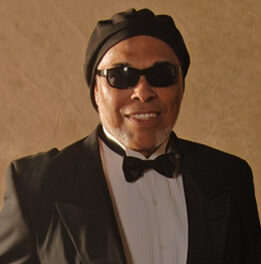As UNCSA continues to return to live performances, guest trombonist Matthew Vaughn produced a recital at UNCSA’s Watson Hall. Hailing from the Philadelphia area but performing all over, Vaughn was invited to campus by UNCSA’s own John Ilika to perform a varied concert filled with programmatic music.
A good collaborative pianist provides a backdrop for the soloist; a great collaborative pianist creates an atmosphere, both leading and following at different times when appropriate. Allison Gagnon was certainly the latter.
Camille Saint-Saëns’ Cavatine, Op. 144, according to Vaughn’s earnest introduction, is one of the most-loved trombone originals in the repertoire. The music’s tempestuous mood changes were adroitly led by Gagnon on the piano, while Vaughn played jaunty but smooth arpeggios before shifting to the contrasting somber and lyrical section. Along with wide, atmospheric intervals in the piano, this music was distinctly French.
The lyrics of Vier ernste Gesänge (Four Serious Songs) by Johannes Brahms, written originally for bass-baritone voice, are indeed somber. Vaughn conveyed these emotions and stories with a furrowed brow and sensitive rubato phrasing. Prior to the performance, he explained his motivation for choosing this music, saying “great music has a story,” making it clear that the audience was about to see and hear his interpretation of the text. The mournful “One thing befalleth” was played with mystery, drawing out the drama of frequent half steps. On the second song, unfortunately, we missed out on one page of music – Vaughn had to stop mid-song because one page was missing on his music stand, but he and Gagnon continued the music without too much pause. Judging by its title, the song “O death” would seem to be the most bitter of all, but Vaughn and Gagnon played up the surprisingly peaceful melody at its conclusion. The two musicians’ moments of unison were quite effective.
Learning Prokofiev’s Romeo and Juliet Suite No. 1, Op. 64 has been a pandemic project for Vaughn. Charlie Vernon‘s trombone arrangement translates Prokofiev’s original orchestral music to trombone and piano, resulting in a difficult but not insurmountable challenge for this pair. The eight movements of the suite cover many textures to tell the tragic story of the doomed lovers. “The City Awakes” featured exciting staccato and pleasing chord progressions, and Vaughn explored the outermost areas of the trombone’s range with alternating high and low staccato melodies. In the following movement, titled “Public Merry-Making,” Vaughn and Gagnon took the previous movement’s energy and nearly double-timed the rapid articulation.
The movement “Montagues and Capulets” is probably the most frequently-performed standalone movement of the suite. Vaughn captured Prokofiev’s fuming, wide-ranging melody, while Gagnon provided the underlying rage to fuel it, with a powerful result. “The Death of Tybalt” is perhaps the most virtuosically challenging movement, but the two musicians matched articulation between their instruments through all the swift melodies and tempo changes. The suite came to a haunting conclusion with eerie high notes in the trombone, a difficult feat that Vaughn performed with total control.
Steven Verhelst‘s “Devil’s Waltz” brought John Ilika onstage for a trombone duet. Full of humor but also difficult variation, the piece began with Ilika and Vaughn playing two seemingly disparate and discordant melodies before Ilika, on the bass trombone, laid down the circular waltz texture. Vaughn, playing his tenor trombone, crooned above with a shmaltzy but not overly loopy melody. This music was a fun closure in constrast to a more serious program.
This performance can be seen online. Please go to the UNCSA website for more information.












